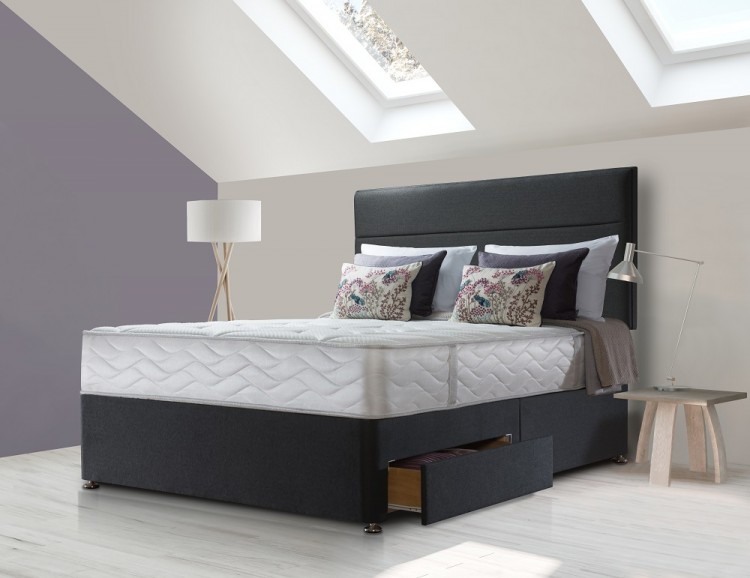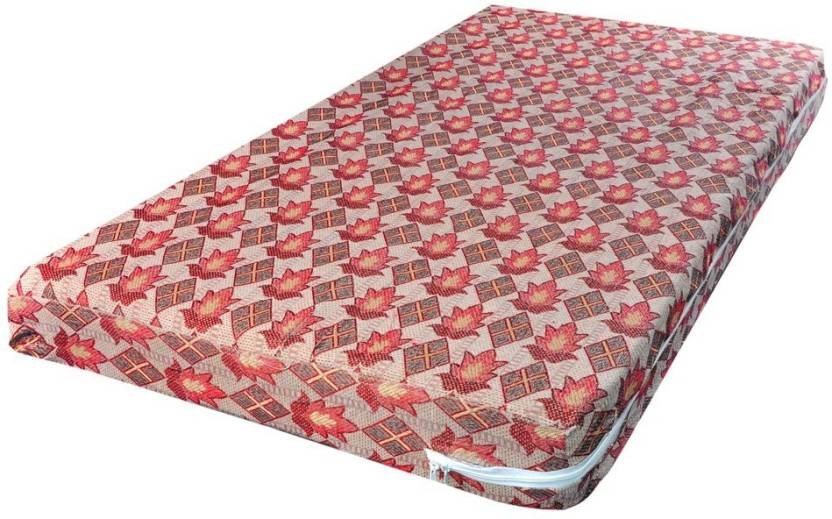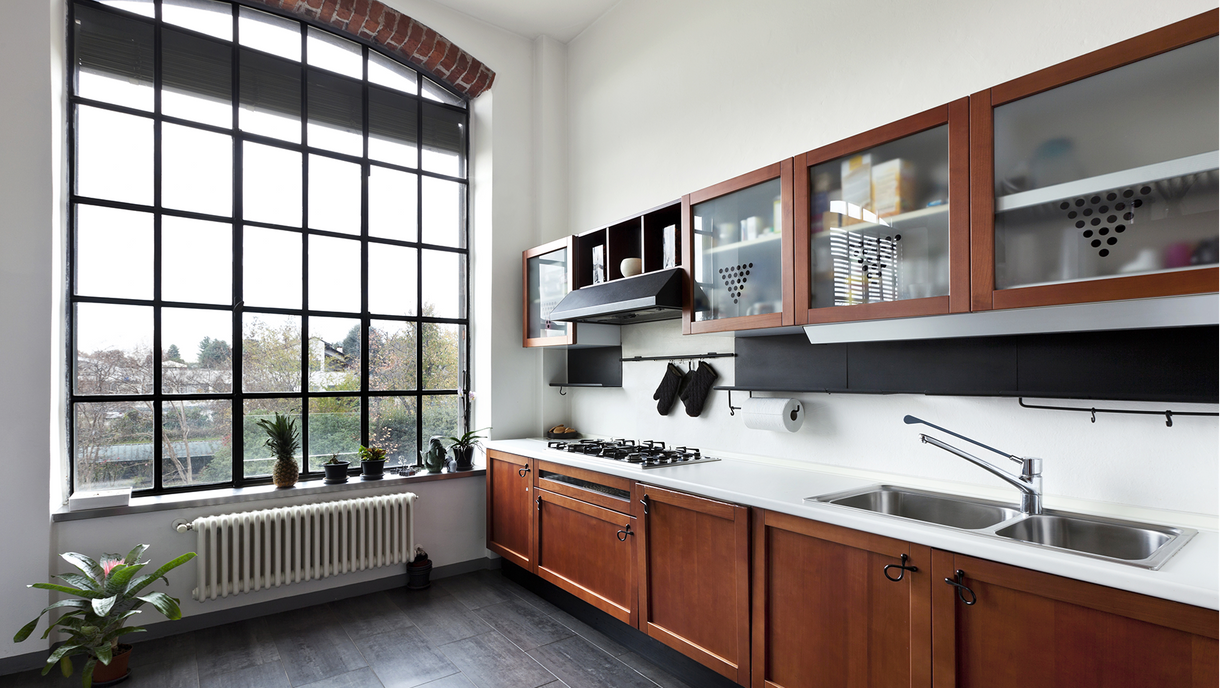When preparing to remodel your kitchen, you often come face to face with the dilemma of layout restrictions. You may have an idea of how the finished kitchen should look and function, but have to work around physical and structural constraints that cannot be moved. For example, a kitchen may possess pillars or other structural supports that cannot be removed, or the plumbing, windows, and other elements are in fixed locations. When you are faced with these types of layout constraints, it’s important to focus on what changes you can make to achieve the design freedom you desire. This could include changing out old appliances, adding counter space, switches, and light fixtures, or repurposing a space to accommodate a larger sink or pantry. On the other hand, you may need to opt for lighter cabinets, smaller countertops, and less decorative elements to make your dream kitchen fit the given layout restrictions.Dilemma of Layout Restrictions in a Kitchen Design
Creating an aesthetically pleasing kitchen design while at the same time bringing in functionality is a major challenge for most interior designers. Getting the balance right often requires a compromise between aesthetics and practical considerations. For example, one might select a beautiful tile floor that lacks the necessary sound and heat insulation, or choose an impressive range cooker that fails to provide adequate workspace. Taking the time to research materials, finishes and fixtures can be beneficial for this purpose, as it will ensure that both the function and style of the kitchen design are both taken into account. Working with an experienced designer who has a track record of success when it comes to kitchen design can also have a huge impact on the success of your design project.Getting the Balance Right Between Appearance and Functionality in a Kitchen Design
While most people think of their dream kitchens as having expansive floor plans, the reality is that many of us are faced with the dilemma of having to work with a small kitchen space. Of course, this can present a major challenge when it comes to incorporating all of the desired features, appliances and storage solutions. Fortunately, it's possible to achieve a very functional kitchen in a small space with the right planning and design decisions. Furniture choices such as slim-fit cabinets and drawers, wall-mounted shelving, and compact seating can help make the most of the limited space. Investing in multi-functional appliances such as two-oven stoves can also make a significant impact when it comes to space-saving. It's also important to keep the color palette, materials, and finishes light and airy to make the space appear larger than it actually is.Primary Kitchen Design Dilemma: Small Space vs. Maximum Functionality
The choice of color palette for a kitchen design can have a major impact on the overall feel and tone of the space. Color schemes can be bold, subtle, classic, modern, and almost anything in between. To find the ideal color palette for a kitchen design, it helps to browse through paint swatches and consider color trends before making any decisions. For a classic look, one could opt for whites, creams, beiges, and light grays. For a more modern design, consider opting for bright, bold colors such as yellow, turquoise, and green. Lighter woods such as birch and maple can provide a neutral palette, whereas darker woods such as walnut and mahogany can bring a richer, warmer feel to a kitchen design. One should also be mindful of the countertops, cabinets, and other kitchen features in order to choose colors that will complement those elements.Choosing the Right Color Palette for a Kitchen Design
Incorporating an eating area into a kitchen design isn't always easy, especially if space is limited. The location of the eating area should depend on the existing layout of the kitchen, as well as where natural light is most abundant in the room. Eating areas that are located near windows and skylights will often feel much brighter and spacious. If possible, you should aim to create an open plan design, which will make the kitchen and eating area feel bigger. For example, a kitchen island could incorporate seating, or a built-in bench or casual dining table could be integrated into the overall design. It may also help to make use of colors and materials to visually separate the eating area from the kitchen while still achieving a cohesive design.How to Incorporate an Eating Area Into a Kitchen Design
Choosing the right materials for a kitchen design is essential for ensuring both style and durability. With so many materials to choose from, selecting the right ones for your kitchen can be daunting. It's important to consider factors such as the amount of traffic that will be in the kitchen, climate, and expected wear and tear when weighing your material options. Wood is often chosen for its classic, timeless look and good acoustics. It’s also fairly easy to maintain and comes in a variety of styles. But if ease of maintenance is what you are after, then metal, plastic, and engineered wood are all good options to consider. Laminate has become increasingly popular for its affordability and durability, but it tends to lack in the style department. Therefore, it's important to select the right materials for your kitchen design to achieve the perfect balance between style and durability.Selecting Appropriate Materials for Both Durability and Design in a Kitchen Design
When it comes to designing a kitchen, it’s important to consider how the overall conception of the room will fit in with the rest of the home. For example, if your home is decorated in a traditional style, then a kitchen design that achieves a modern look would seem out of place. Therefore, it’s important to ensure that the kitchen design fits in with the overall design theme of the home. Your kitchen doesn’t necessarily need to be a replica of the rest of the home, but it should still match in terms of style, color, and overall atmosphere. Incorporating elements of the main design theme such as wallpapers, textures, colors, and finishes can help create an atmosphere of cohesiveness throughout the home.Matching a Kitchen Design with the Overall Home Design Concept
Creating a kitchen design that looks great and achieves practicality is undoubtedly a challenge. Form and function are important considerations when it comes to kitchen design, and must be balanced when making planning and design decisions. This means selecting materials and fixtures that look great but also provide functional benefits. For example, wood flooring can provide both beauty and comfort, but is known for being more prone to scratches. This means it may need regular care and maintenance to stay looking great. Metal countertops can provide a contemporary look, but may need additional preparation to resist scratches and damage. It is up to the designer to properly balance form and function to create a kitchen design that looks great and lasts long.Creating a Balance of Form and Function in Kitchen Design
Making the most of a limited kitchen space can be a difficult task, as you may not have room to incorporate all of the features you desire. However, with careful planning and creative solutions, it is possible to create a kitchen design that is both functional and aesthetically pleasing. One very helpful solution to maximizing kitchen space is to create different zones. For example, one can dedicate an area for preparation, washing, cooking, and storage. This can be accomplished by installing multi-level shelves, moving appliances around, and making use of wall space. Making use of space under the countertops, such as drawers and slide-out storage solutions can also be a great way to create a functional and efficient use of kitchen space.Making the Most of Limited Space in A Kitchen Design
Organizing kitchen appliances can be one of the most challenging aspects of a kitchen remodel. In most cases, there are certain fixed elements such as a fridge, oven, and sink that need to stay in place. The real challenge lies in finding creative ways to add additional appliances while still allowing enough space for essential kitchen functions. Built-in appliances such as dishwashers, microwaves, and ice makers can help to create a more spacious kitchen. On the other hand, freestanding appliances such as toasters, blenders, and coffee makers can often be easily maneuvered around the kitchen. Keeping an eye on the latest trends in kitchen appliances can also help to create a design that is both functional and stylish.Organizing Kitchen Appliances for Maximum Functionality in a Kitchen Design
Maximizing the efficiency of a kitchen design can make all the difference when it comes to achieving a practical and functional area. A well-organized kitchen can make the difference between a stressful and efficient cooking experience. For example, incorporating elements such as pull-out shelves, hooks, and specially designed storage solutions can help you make the most of your kitchen space. It's also important to pay attention to details such as the placement of appliances and lighting. This will help to ensure that you can easily access all of the necessary items while cooking and that the optimal amount of light is available to perform tasks. Additionally, making smaller modifications such as adjusting cabinet heights and centralizing a workspace can also help to maximize the efficiency of a kitchen design.Maximizing Efficiency in a Kitchen Design
Solving Your Kitchen Design Dilemma
 Whether you are trying to redesign a kitchen or are just getting started in the world of home remodeling
design
, the kitchen
design
dilemma is an ever-present worry. It’s something that people often struggle with and can either hold them back from ever completing their dream kitchen, or cause them to suffer from regret after the job is done.
Whether you are trying to redesign a kitchen or are just getting started in the world of home remodeling
design
, the kitchen
design
dilemma is an ever-present worry. It’s something that people often struggle with and can either hold them back from ever completing their dream kitchen, or cause them to suffer from regret after the job is done.
Creating a Focal Point
 One of the best ways to combat any kitchen design dilemma is to create a focal point. This could be done through something such as a stunning refrigerator that stands out from the rest of the room and catches everyone’s eye. Or it could be a large picture that sets the color palette of the entire room; inspiring the other pieces bought to match and flow with it.
One of the best ways to combat any kitchen design dilemma is to create a focal point. This could be done through something such as a stunning refrigerator that stands out from the rest of the room and catches everyone’s eye. Or it could be a large picture that sets the color palette of the entire room; inspiring the other pieces bought to match and flow with it.
Utilizing Negative Space
 Negative space, such as the space between the countertops and cabinets, is often a great way to bring the eye around the room all the way to the focal point. There are many ways to accomplish this depending on your available space and the look you’re going for; from adding shelves, wraparound cabinets, or just keep it clean with empty cabinets.
Negative space, such as the space between the countertops and cabinets, is often a great way to bring the eye around the room all the way to the focal point. There are many ways to accomplish this depending on your available space and the look you’re going for; from adding shelves, wraparound cabinets, or just keep it clean with empty cabinets.
Maximizing Your Counter Space
 A well-utilized countertop can instantly make your kitchen look more elegant and efficient. Consider the sink location, position of the appliances, and the amount of countertop you have available. Utilizing features such as overhangs and end caches, as well as the placing of your store-bought kitchen island, can easily change up the kitchen design in an efficient and visually-pleasing manner.
A well-utilized countertop can instantly make your kitchen look more elegant and efficient. Consider the sink location, position of the appliances, and the amount of countertop you have available. Utilizing features such as overhangs and end caches, as well as the placing of your store-bought kitchen island, can easily change up the kitchen design in an efficient and visually-pleasing manner.
Finding the Perfect Lighting
 Poor lighting can easily ruin the atmosphere and look of a dream kitchen design. Consider your current lighting elements and how they can work within the room. The position of the windows and the shadows they may cast need to be taken into consideration in order to make the most of all the natural sunlight your space has to offer. Accent lighting, LED’s or a dim bulb can be utilized to show off the countertop, draw attention to the focal point, and set off the mood of the room.
Poor lighting can easily ruin the atmosphere and look of a dream kitchen design. Consider your current lighting elements and how they can work within the room. The position of the windows and the shadows they may cast need to be taken into consideration in order to make the most of all the natural sunlight your space has to offer. Accent lighting, LED’s or a dim bulb can be utilized to show off the countertop, draw attention to the focal point, and set off the mood of the room.
Considering the Small Details
 Kitchen design does not stop after the cabinets and countertops have been laid down. The smaller details can make or break the overall look of your dream kitchen. The knobs and handles of the cabinets should be chosen for their aesthetic as much as how they will work with the rest of your décor. A color pallet should be established for the room and all your purchases should match within that range. And finally, don’t forget to add some decorative pieces such as artwork or plants. They truly bring the kitchen design together and will make it complete.
Kitchen design does not stop after the cabinets and countertops have been laid down. The smaller details can make or break the overall look of your dream kitchen. The knobs and handles of the cabinets should be chosen for their aesthetic as much as how they will work with the rest of your décor. A color pallet should be established for the room and all your purchases should match within that range. And finally, don’t forget to add some decorative pieces such as artwork or plants. They truly bring the kitchen design together and will make it complete.




























































































